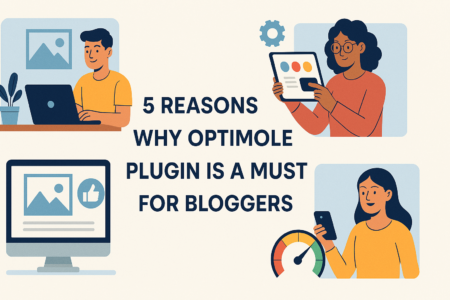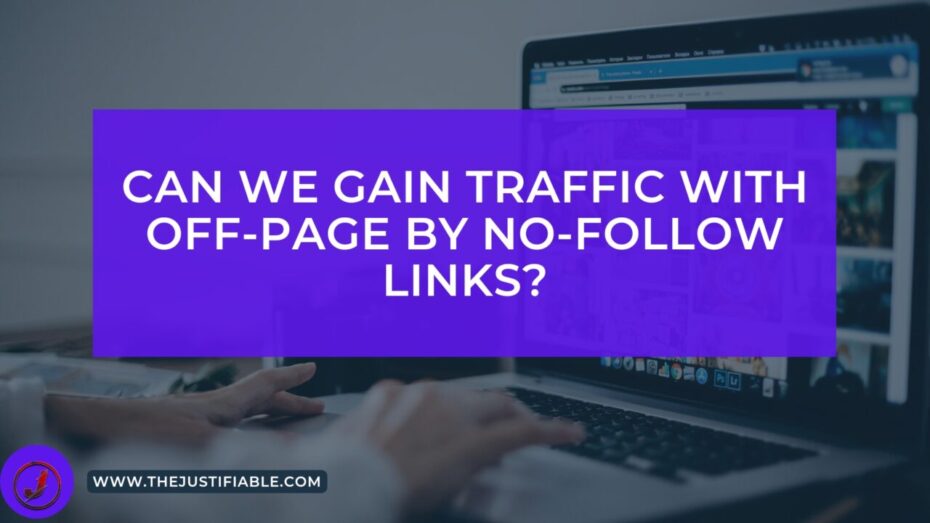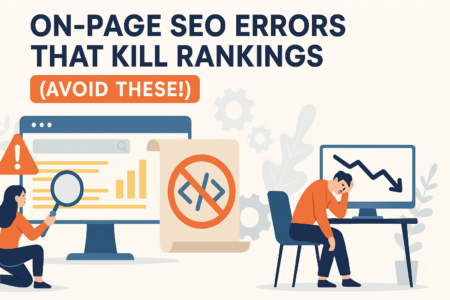Table of Contents
Are you struggling to make your mark in the local search results? Wondering why, despite your efforts, your business isn’t showing up where you’d expect it in local searches? Could it be that there are gaps in your local SEO strategy that you’re not aware of? Local SEO strategy is critical for any business looking to attract local customers, but it’s easy to fall into common traps that can hinder your progress.
In the digital age, where local searches lead 50% of mobile users to visit stores within one day, understanding and implementing a robust local SEO strategy has never been more important. Yet, many businesses overlook key elements that can significantly enhance their visibility and attractiveness to local customers.
From the significance of local keywords to the power of customer reviews, every aspect plays a pivotal role in how your business is perceived online.
This introduction aims to shed light on the most common mistakes businesses make in their local SEO strategies. By identifying these pitfalls, we provide a foundation for understanding how to avoid them and optimize your approach.
As we delve into the specifics, remember, optimizing for local SEO isn’t just about ticking boxes; it’s about strategically positioning your business in the local digital landscape to attract, engage, and convert local customers effectively.
The Critical Importance of a Robust Local SEO Strategy
Did you know that 46% of all Google searches are seeking local information? This statistic underscores the undeniable importance of a robust local SEO strategy for any business looking to capture the attention of the local market. In today’s digital landscape, being visible in local search results isn’t just an advantage; it’s a necessity.
From my perspective, the core of a successful local SEO strategy lies in understanding how your potential customers search for services or products similar to yours. It’s not just about optimizing for search engines; it’s about optimizing for people. Tailoring your online presence to meet the specific needs and search behaviors of your local audience can dramatically increase your visibility and attract more foot traffic to your store. This approach requires a deep understanding of local keywords, local backlinks, and the significance of listings like Google My Business.
In my opinion, one of the most impactful actions you can take is to ensure your business information is consistent and accurate across all online platforms. This not only boosts your local SEO but also builds trust with your customers. Furthermore, encouraging and managing customer reviews demonstrates to both your audience and search engines that your business is reputable and valued by the community. I strongly believe that leveraging these aspects effectively forms the cornerstone of a powerful local SEO strategy.
SEO Services Recommendations
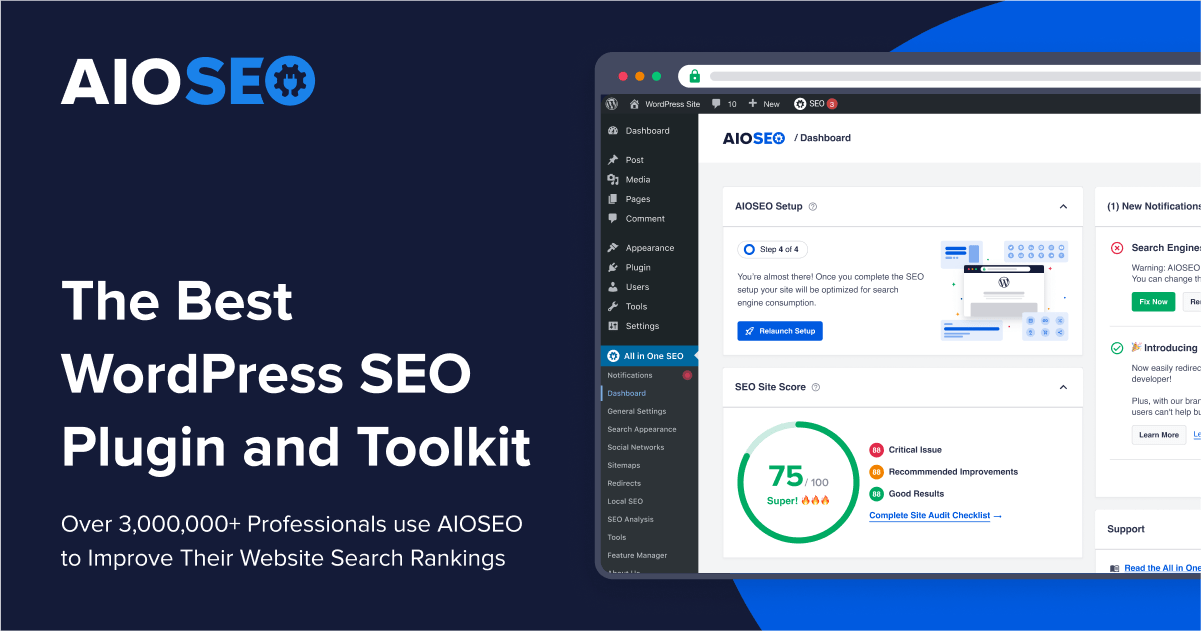 AIOSEO
| 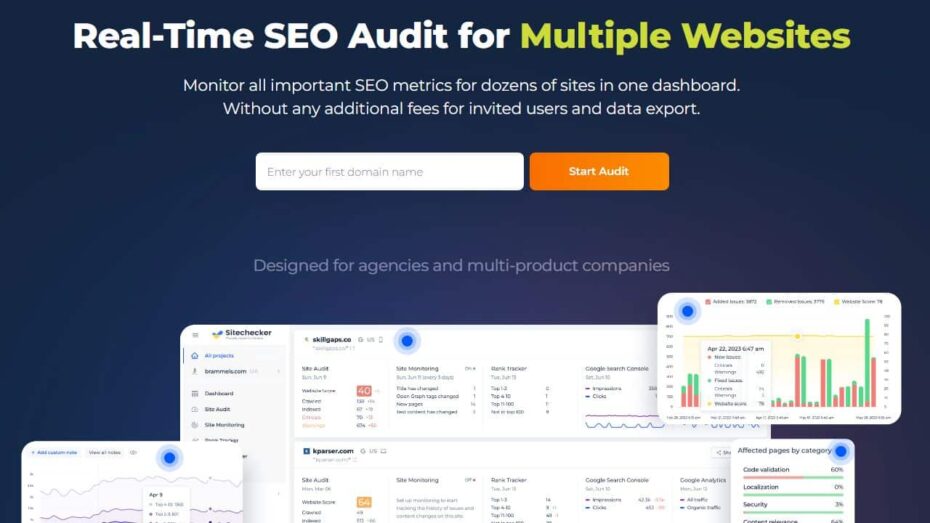 Sitechecker
| 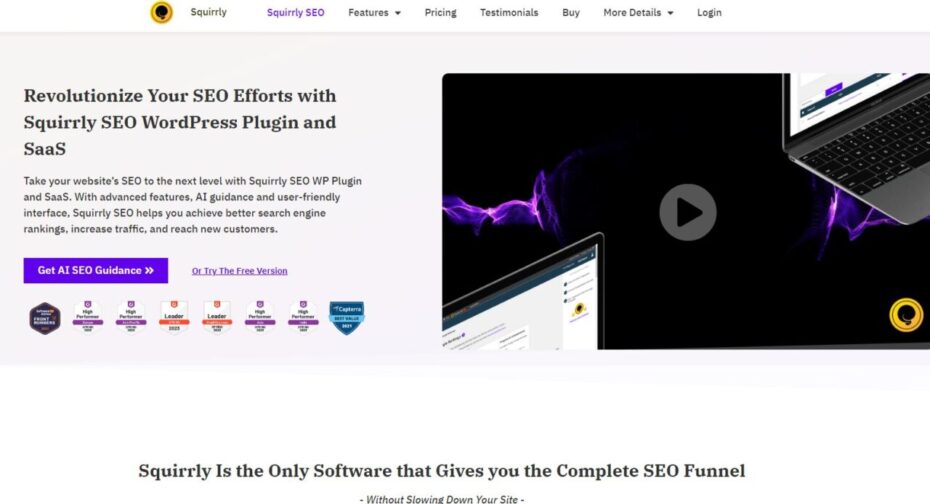 Squirrly
|
1. Ignoring the Power of Local Keywords: A Costly Mistake
Surprisingly, 72% of consumers who did a local search visited a store within five miles. This statistic illustrates the immense power of local search and, by extension, the critical importance of local keywords in your SEO strategy. Ignoring local keywords is not just an oversight; it’s a costly mistake that can significantly hinder your business’s ability to connect with nearby customers.
From my perspective, the integration of local keywords into your content, meta descriptions, and titles is essential for capturing the attention of your target audience. Local keywords act as a bridge between your business and potential customers who are actively searching for products or services in your area. Most importantly, they help improve your visibility in local search results, ensuring that your business appears to those most likely to visit in person or make a purchase.
My recommendation for businesses looking to enhance their local SEO strategy is to conduct thorough research to identify the most relevant local keywords for their niche. This involves understanding not just the general terms related to your business, but also the specific phrases and questions used by your local audience. Incorporating these keywords naturally into your online content can vastly improve your search engine rankings. In my experience, businesses that prioritize local keyword optimization see a significant increase in local traffic and, ultimately, conversions.
2. Neglecting Google My Business: Losing Out on Local Leads
“Visibility is more important than ability” – this quote perfectly encapsulates the essence of local SEO and highlights the critical role of Google My Business (GMB) in achieving online visibility. Neglecting GMB is akin to turning away potential local leads, as it serves as one of the most powerful tools for enhancing your business’s presence in local search results.
Claim and Optimize Your GMB Listing: The first step is to claim your GMB listing if you haven’t already. This involves verifying your business information and ensuring it’s accurate and comprehensive. Include your business name, address, phone number, and hours of operation. I strongly believe that a fully optimized GMB listing significantly increases your chances of appearing in local search results and the coveted Local Pack.
Encourage and Respond to Reviews: Customer reviews are gold for local SEO. Encourage your satisfied customers to leave positive reviews on your GMB listing and, most importantly, take the time to respond to these reviews. This not only demonstrates that you value customer feedback but also signals to Google that your business is active and reputable, boosting your local search visibility.
Publish Posts and Update Photos Regularly: Regularly updating your GMB listing with fresh content and photos can keep your business relevant and engaging. Posts about promotions, events, or new products/services can capture the interest of your local audience. In my experience, businesses that actively manage their GMB listings tend to perform better in local searches. From my perspective, this continuous engagement is crucial for maintaining and improving your local SEO standing.
3. Overlooking Customer Reviews: The Untapped Goldmine
Just as a single spark can start a wildfire, a single customer review can significantly amplify your business’s visibility and credibility online. In the realm of local SEO, customer reviews are like an untapped goldmine that many businesses overlook. They not only influence potential customers’ perceptions but also play a crucial role in improving your search engine rankings. In my opinion, actively seeking and managing customer reviews should be a cornerstone of your local SEO strategy.
Reviews serve as social proof, directly impacting your business’s attractiveness to potential customers. Most importantly, they signal to search engines that your business is both relevant and trustworthy, which can enhance your visibility in local search results. Encouraging satisfied customers to share their experiences online is a simple yet effective way to harness the power of reviews.
My suggestion for businesses is to implement a proactive approach to managing online reviews. This includes regularly monitoring review sites, responding to reviews (both positive and negative) in a timely and professional manner, and actively encouraging customers to leave their feedback. From my perspective, handling reviews well can significantly boost your local SEO efforts, making your business more visible and appealing to local searchers.
Furthermore, leveraging positive reviews in your marketing materials and on your website can further reinforce your business’s reputation. In my experience, highlighting customer testimonials on your website not only improves your site’s conversion rate but also contributes to your overall local SEO performance. It seems to me that businesses that prioritize customer feedback and integrate it into their online presence are more likely to succeed in attracting and retaining customers through local search.
4. Underestimating the Influence of Local Backlinks: A Strategic Blunder
It’s easy to acknowledge the value of backlinks in the vast sea of SEO tactics, yet many businesses still underestimate the specific power of local backlinks for their local SEO strategy. Local backlinks, or links from relevant local sources to your website, are invaluable in signaling to search engines the relevance and authority of your site within a local context.
In my view, building a strong portfolio of local backlinks requires intentional effort and strategic networking. Partnering with local businesses, participating in community events, and getting featured in local media outlets are excellent ways to earn these valuable links. These activities not only boost your local SEO but also enhance your visibility and reputation within the community. I would say that prioritizing local backlink acquisition is akin to laying a solid foundation for your online presence in the local market.
Most importantly, the quality of backlinks significantly outweighs the quantity. My recommendation is to focus on securing backlinks from reputable and relevant local sources that can genuinely elevate your site’s authority. Engaging in local SEO activities, such as sponsoring local events or collaborating with local influencers, can be effective ways to generate these high-quality local backlinks. From my perspective, such strategic actions not only improve your local search rankings but also drive targeted traffic to your website, ultimately contributing to your business’s growth and success in the local market.
5. Failing to Optimize for Mobile Users: A Digital Sin
It might come as a surprise, but over 60% of searches now come from mobile devices. This staggering statistic underscores the critical mistake many businesses make by failing to optimize their online presence for mobile users. In today’s fast-paced digital world, mobile optimization is not just a luxury; it’s an absolute necessity for any local SEO strategy aiming to succeed.
From my perspective, ensuring your website is mobile-friendly is the first step toward capturing the attention of the ever-growing mobile user base. A site that loads quickly, displays properly on various screen sizes, and offers an intuitive user experience is more likely to retain visitors and convert them into customers. Most importantly, Google prioritizes mobile-optimized sites in its search rankings, meaning that neglecting this aspect can severely hinder your visibility in local search results.
My recommendation is to conduct a thorough mobile audit of your site. This includes checking load times, responsive design, and ease of navigation on smartphones and tablets. Tools like Google’s Mobile-Friendly Test can offer valuable insights into how well your site performs on mobile devices. In my experience, businesses that prioritize mobile optimization not only improve their local SEO performance but also see a significant increase in engagement and conversions. Remember, in the realm of local search, failing to cater to mobile users is a sin you cannot afford to commit.
Turning Mistakes Into Milestones: Strategies for Local SEO Success
Just as a gardener turns over the soil to reveal fertile ground beneath, businesses can transform their local SEO strategy mistakes into stepping stones for success. Recognizing and rectifying these errors not only enhances your online visibility but also strengthens your connection with the local community.
The journey from oversight to optimization is pivotal for businesses aiming to thrive in the competitive digital landscape. By addressing the common pitfalls in local SEO, companies can significantly improve their local search rankings, driving more traffic and ultimately increasing conversions.
Implementing a targeted local SEO strategy involves more than just fixing past mistakes; it’s about proactively shaping a digital presence that resonates with your local audience. This includes optimizing your Google My Business listing, leveraging local keywords, and ensuring your website is mobile-friendly. Additionally, engaging with your community through local events and partnerships can amplify your visibility and credibility.
Remember, each step towards improving your local SEO is a move towards establishing a stronger, more visible brand within your local market. Embracing these strategies not only mitigates past oversights but also paves the way for a prosperous future, firmly rooted in the needs and preferences of your local customers.
Leveraging Local Keywords for Maximum Impact
In the tapestry of local SEO, local keywords are the threads that connect your business to the community. Just as a key opens a lock, local keywords unlock the door to higher visibility in local search results. The art of leveraging these keywords is not just about inclusion; it’s about making them a natural part of your digital narrative. This strategic integration is crucial for businesses aiming to capture the attention of local searchers actively looking for services or products in their area.
Identify Your Local Keywords: Start by researching and identifying keywords that are relevant to your business and local area. Tools like Google Keyword Planner and Google Trends can provide insights into the search behaviors of your local audience. I suggest focusing on keywords that blend your offerings with local identifiers, such as city names or neighborhood specifics.
Incorporate Keywords Strategically: Once you’ve identified your local keywords, the next step is to weave them into your website’s content, meta titles, descriptions, and even your blog posts. However, it’s important to do this naturally. My recommendation is to create content that provides value to your readers while subtly integrating local keywords. This approach ensures that your content is both engaging and SEO-friendly.
Optimize Your Google My Business Listing: Including local keywords in your Google My Business (GMB) listing is also crucial. From my perspective, your GMB profile acts as a direct conduit to local searchers. Ensure your business description, services, and posts on GMB are optimized with local keywords. This not only enhances your visibility in local search results but also helps Google understand and categorize your business more effectively.
Maximizing Your Presence on Google My Business
Did you know that businesses with photos on their Google My Business (GMB) listings receive 42% more requests for directions on Google Maps and 35% more click-throughs to their websites than those without? This statistic highlights the importance of a fully optimized GMB listing in enhancing your local SEO strategy and attracting more customers. Google My Business is a powerful tool that connects your business with local customers, making it essential to maximize its potential for your advantage.
Complete Every Section of Your GMB Listing: Ensure every part of your GMB profile is filled out in detail, including your business name, address, phone number, website, and hours of operation. Consistency is key, so make sure the information matches across all platforms. I strongly recommend also adding a thorough business description, categories, and services offered to give potential customers a clear understanding of what your business does.
Add High-Quality Photos and Videos: Businesses that regularly update their GMB listings with new, high-quality photos and videos tend to engage more users. Include images of your premises, products, staff, and any other elements that accurately represent your business. This visual content can significantly impact a potential customer’s decision to choose your business over a competitor.
Encourage and Respond to Reviews: Customer reviews are a cornerstone of your GMB presence. Actively encourage your customers to leave reviews and, most importantly, respond to them. Whether positive or negative, a thoughtful response shows that you value customer feedback and are committed to customer satisfaction. From my perspective, regularly engaging with reviews can improve your business’s visibility and attractiveness to potential customers.
Harnessing the Power of Customer Reviews in Local SEO
In the digital age, customer reviews are the lifeblood of local search optimization. Surprisingly, 91% of consumers read online reviews for local businesses in 2024, a clear indication of their growing influence. This statistic underscores the pivotal role that customer feedback plays in shaping a business’s online reputation and its visibility in local search results. Integrating customer reviews into your local SEO strategy is not just beneficial; it’s essential for success.
Actively Seek Reviews from Satisfied Customers: Encouraging your happy customers to share their experiences online can significantly boost your local SEO efforts. I suggest creating a simple, streamlined process for customers to leave reviews, such as sending follow-up emails with links to your Google My Business or Yelp page. Remember, authenticity is key, so never incentivize reviews, but do make the process as easy as possible for customers.
Respond to All Reviews, Positive or Negative: Engaging with customer reviews demonstrates to both your customers and search engines that you value feedback and are committed to customer satisfaction. My recommendation is to respond thoughtfully to each review, addressing any concerns and thanking customers for their praise. This not only improves your relationship with customers but also positively impacts your local search rankings.
Leverage Reviews in Your Marketing: Showcasing positive reviews on your website or in social media posts can enhance your business’s credibility and attract more customers. From my perspective, highlighting real customer experiences is a powerful way to convey trust and quality. Additionally, integrating a review widget on your site can provide fresh, dynamic content, which is beneficial for SEO.
Building a Network of Quality Local Backlinks
You might be surprised to learn that backlinks, often considered the backbone of SEO, are just as crucial in the local SEO landscape. A study found that businesses appearing in the top local search results had significantly more backlinks than those ranking lower. This highlights the undeniable impact of quality local backlinks on your visibility in local searches. Building a network of local backlinks is not just about quantity; it’s about cultivating high-quality links that boost your credibility and search engine rankings.
Partner with Local Businesses and Organizations: Collaborating with local businesses and organizations can lead to valuable backlink opportunities. I recommend identifying non-competing businesses in your area and proposing mutually beneficial content collaborations, such as guest blog posts or co-hosted events. These partnerships can provide natural, contextually relevant backlinks that enhance your local SEO efforts.
Get Featured in Local Media: Local news sites and community blogs are excellent sources for high-quality backlinks. To tap into these resources, I suggest sharing newsworthy stories about your business, such as community involvement, charity events, or unique business milestones. Press releases and direct outreach to local journalists can increase your chances of getting featured, thereby earning you reputable backlinks.
Utilize Local Directories and Forums: Ensuring your business is listed in local directories and engaging in community forums can also contribute to your backlink profile. From my perspective, directories like Yelp, Yellow Pages, and niche-specific listings not only provide backlinks but also increase your business’s visibility to local customers. Participation in local forums and discussion boards, while subtly including your website’s link in your signature or profile, can further support your backlink strategy.
Prioritizing Mobile Optimization for Local Search
In today’s fast-paced digital environment, mobile optimization for local search is not just important; it’s imperative. A staggering 80% of smartphone users turn to their devices for local searches, highlighting the critical need for businesses to ensure their online presence is mobile-friendly. This shift towards mobile has dramatically transformed the local SEO landscape, making mobile optimization a cornerstone for any successful local SEO strategy.
Ensure Your Website is Mobile-Friendly: The first step in prioritizing mobile optimization is to ensure that your website is responsive and loads quickly on all devices. I recommend conducting a mobile usability test using tools like Google’s Mobile-Friendly Test. This can help identify any issues with your site’s mobile version, such as text too small to read, use of incompatible plugins, and content wider than the screen.
Improve Site Speed: Mobile users expect quick access to information, making site speed a critical factor in user satisfaction and SEO. Optimizing images, leveraging browser caching, and reducing redirects are just a few ways to enhance your website’s loading time. From my perspective, even a one-second delay in mobile load times can significantly impact user experience and engagement.
Optimize for Local Search on Mobile: Including local keywords in your site’s content and metadata is crucial, but don’t stop there. I suggest optimizing for “near me” searches by ensuring your business’s name, address, and phone number (NAP) are consistent across your website and local listings. Additionally, incorporating local landmarks or popular search queries related to your location in your content can further improve your visibility in mobile local search results.
Measuring Success: Tracking Your Local SEO Strategy Progress
In the dynamic world of local SEO, knowing how to measure success is as crucial as the strategy itself. It’s a process that requires attention to detail and a deep understanding of the metrics that truly matter. A comprehensive approach to tracking your local SEO strategy progress not only illuminates your victories but also highlights areas needing improvement. It’s about leveraging the right tools and data to fine-tune your approach, ensuring that every effort contributes to your overarching goal of boosting local visibility and attracting more customers.
This journey of measurement and analysis involves more than just checking your rank in search results; it’s about understanding the behavior and preferences of your local audience. By diving into the analytics, businesses can uncover valuable insights into how users interact with their online presence. This data-driven approach allows for informed decisions, optimizing strategies to better target local searchers. Importantly, it sets a foundation for continuous improvement, ensuring that your local SEO strategy remains agile and effective in the ever-evolving digital landscape.
Key Metrics to Monitor for Local SEO Optimization
Search Visibility and Ranking for Local Keywords: Tracking how your business ranks for targeted local keywords is fundamental. It gives you a clear idea of where you stand in local search results and how visible you are to your target audience. I suggest using tools like Google Search Console to monitor your rankings and identify which keywords are driving traffic to your site.
Website Traffic from Local Searches: Understanding the volume and behavior of traffic coming from local searches is crucial. Look at metrics such as the number of visits, bounce rate, and average session duration specifically from users in your targeted locality. This information, accessible through Hotjar, can help gauge the effectiveness of your local SEO efforts in attracting relevant visitors.
Conversion Rates from Local Visitors: Ultimately, the goal of any local SEO strategy is to convert online visitors into customers. Monitoring conversion rates from users who found you through local search is essential. Track actions like calls made from your Google My Business listing, appointment bookings, or form submissions on your website. This metric is a direct indicator of how well your local SEO strategy is translating into business outcomes.
Measuring the success of your local SEO strategy by closely monitoring these key metrics allows you to make data-driven decisions and optimize your efforts for better results. It’s about understanding what works, what doesn’t, and where there’s room for improvement.
From my experience, businesses that adopt a meticulous approach to tracking their local SEO performance are the ones that thrive in the competitive landscape of local search. Remember, the goal is not just to attract more traffic but to convert that traffic into loyal customers.
Mastering Local SEO Strategy for Business Growth
Mastering local SEO strategy is akin to unlocking the treasure chest of digital marketing for local businesses. It’s not just about being seen; it’s about being chosen by your local community. The journey through optimizing local SEO is continuous, demanding a keen eye on evolving trends and a willingness to adapt. Most importantly, it requires a deep understanding of your local audience’s needs and behaviors, aligning your online presence to meet these demands effectively.
Continuously Optimize and Update Your Strategies: The digital landscape is perpetually changing, and so are the algorithms that drive local search results. I recommend regularly reviewing and updating your local SEO strategy to ensure it remains effective. This includes staying up-to-date with Google’s algorithm updates, refining your local keyword strategy, and enhancing your Google My Business listing with fresh content and accurate information.
Leverage Analytics for Informed Decision Making: Utilizing analytics is crucial in understanding the impact of your local SEO efforts. Tools like Google Analytics and Google Search Console can provide valuable insights into how users are finding and interacting with your site. By analyzing this data, you can identify successful tactics and areas that need improvement. From my perspective, informed decisions based on analytics can significantly enhance your local SEO performance.
Engage and Build Relationships with Your Local Community: At its core, local SEO is about connecting with your local community. I strongly believe in the power of engagement, whether it’s through responding to reviews, participating in local events, or collaborating with other local businesses. Building strong relationships within your community not only boosts your local SEO but also fosters loyalty and trust among your customers.
Mastering your local SEO strategy is a vital component of business growth in the digital era. It’s about more than just visibility; it’s about creating meaningful connections with your local audience and providing them with value. In my experience, businesses that prioritize and continuously refine their local SEO strategies are the ones that thrive and stand out in their communities. Remember, the goal of local SEO is not just to lead the search engine rankings but to genuinely serve and engage your local customers, driving both online and offline growth.
Frequently Asked Questions (FAQ)
What is Local SEO and why is it important?
Local SEO is the practice of optimizing your online presence to increase visibility in local search results. It’s crucial for businesses targeting customers in a specific geographic area because it helps attract local customers who are more likely to convert into sales.
How do I optimize my Google My Business profile?
To optimize your Google My Business profile, ensure that all business information is accurate and complete, including name, address, phone number, and business hours. Regularly update your profile with posts, photos, and respond to reviews to increase engagement.
What are local keywords and how do I use them?
Local keywords are search terms that include location-specific phrases, such as “plumber in [city name].” Use these keywords in your website content, meta descriptions, and Google My Business profile to improve your visibility in local searches.
How can customer reviews impact my local SEO?
Customer reviews play a significant role in local SEO by boosting your business’s credibility and trustworthiness. Positive reviews can enhance your rankings in local search results and attract more customers.
What are local backlinks and why do they matter?
Local backlinks are links from local websites, directories, or businesses that point to your site. They are important because they signal to search engines that your business is relevant in the local community, improving your local search rankings.
How do I track the success of my local SEO strategy?
Track your local SEO success by monitoring key metrics such as search visibility, website traffic from local searches, and conversion rates from local visitors. Tools like Kissmetrics and Hotjar can help measure these metrics.
Why is mobile optimization crucial for local SEO?
Mobile optimization is crucial because a large percentage of local searches are performed on mobile devices. A mobile-friendly site ensures a better user experience and improves your chances of ranking higher in mobile search results.
How do I choose the right local keywords?
To choose the right local keywords, research what terms your target audience uses when searching for services or products in your area. Use tools like Semrush to identify high-volume, location-specific keywords.
What is the importance of NAP consistency in local SEO?
NAP consistency (Name, Address, Phone number) across all online platforms is essential for local SEO. Inconsistent NAP information can confuse search engines and potential customers, leading to lower search rankings.
How can I get more local backlinks?
To get more local backlinks, engage in community events, partner with local businesses, and reach out to local media for features. These activities help build relationships that lead to natural backlink opportunities.




